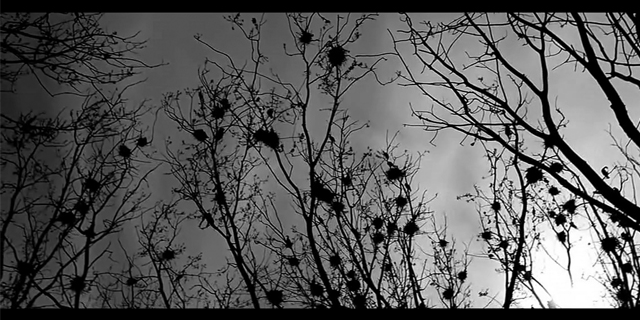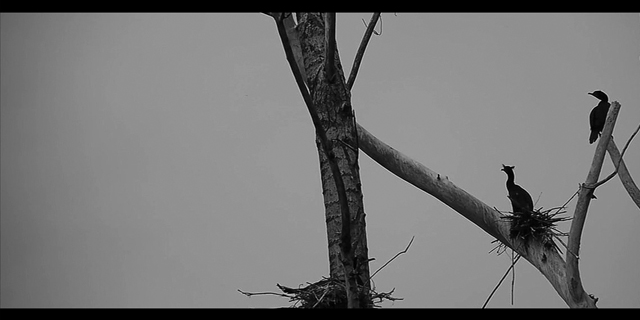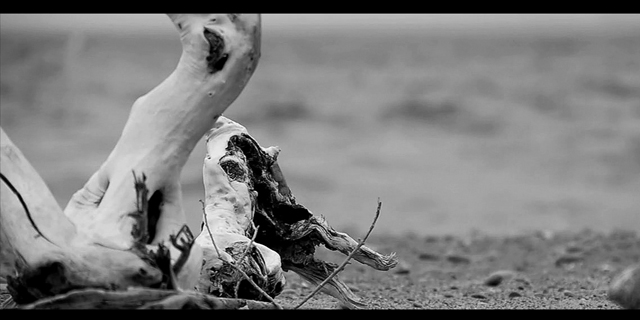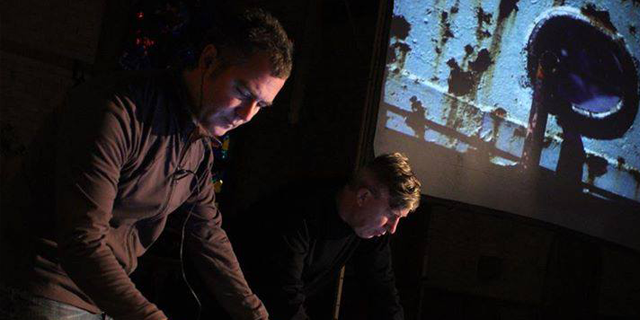The title ‘HTO’ is a reference to the chemical composition of water, as well as to Toronto’s nickname of ‘T.O.’.
The pieces on this album are composed of field recordings sourced from the city’s urban waterfront, buried rivers and vanished shorelines.
The majority of urban Toronto rests on the bed of what was once Lake Iroquois - a large glacial lake that has become what is now Lake Ontario. Many rivers still run through the urban core, but have been buried in order to aid urban development; ventilation shafts, the remains of bridges and evidence of ancient portage trails still dot the city’s landscape, serving as reminders of our geographical history.
Much of Toronto’s present-day waterfront is landfill and extends almost 1km from the originals.
horeline; it is characterized by rapid urban development (at this time, the city has more high-rises under construction than any other city in North America, many of these being built along the lakefront), and the once extensive railway corridor - now shrinking to make room for large-scale condominium developments. Offshore from the downtown core, one finds Toronto Island, now mostly parkland, but dominated (both geographically and acoustically) on the western side by City Centre Airport. Further out is the Leslie Spit, an large (5km), man-made peninsular extension of the shoreline comprised of urban rubble and material excavated during the creation of the Toronto subway system. Though it is now a parkland, its shores are still being expanded and one can find all manner of urban detritus there, including the remains of demolished office towers and factories.
The pieces that comprise ‘HTO’ are meant as a sonic exploration of Toronto’s water-related history. Many locations were revisited many times over the course of the last few years with a view to examining seasonal variations and the effects of urban expansion upon the soundscape. A particular focus has become the use of man-made resonant objects/spaces as well as the exploitation of the effect of the landscape - particularly open water and parkland - to emphasize their natural filtering effects upon the sound.
Audio was recorded using a variety of techniques and equipment, including contact, hydrophone, binaural, induction, and boundary microphones; extensive use of layering has been made in order to examine the sonic variations inherent in both the locations themselves as well as the contrasting recording techniques. In some cases, the pieces were arranged ‘live’ in the locations where the field recordings were made - a direct response to the visual and acoustic environment.
HTO
Le titre «HTO» est une référence à la composition chimique de l'eau, ainsi qu'au surnom de Toronto «T.O.».
Les pièces de cet album sont composées d'enregistrements de terrain issus du front de mer urbain de la ville, des rivières enterrées et des cours d'eau disparus.
La majorité du Toronto urbain repose sur le lit de ce qui était autrefois le lac Iroquois - un grand lac glaciaire qui est devenu maintenant le lac Ontario. Beaucoup de rivières traversent encore le noyau urbain, mais ont été enterrés afin d'aider au développement urbain; Les puits de ventilation, les restes de ponts et les preuves des anciennes pistes de portage font toujours ressortir le paysage de la ville, en rappelant notre histoire géographique.
La majeure partie du front de mer de Toronto est une mise en décharge et s'étend à près de 1 km des originaux.
Horeline; Il se caractérise par un développement urbain rapide (à cette époque, la ville a plus de hauts plateaux que n'importe quelle autre ville en Amérique du Nord, dont beaucoup sont construits le long du bord du lac) et le couloir ferroviaire autrefois vaste - maintenant en train de se rétrécir Espace pour les développements en copropriété à grande échelle. Au large du centre-ville, on trouve l'île de Toronto, maintenant principalement des parcs, mais dominée (géographiquement et acoustiquement) du côté ouest par l'aéroport du centre-ville. Plus loin, le Leslie Spit, une grande extension péninsulaire artificielle (5 km), composée de décombres urbains et de matériel excavé lors de la création du métro de Toronto. Bien que ce soit maintenant un parc, ses rivages sont encore en expansion et on peut trouver toute une sorte de détritus urbains, y compris les restes de tours de bureaux et d'usines démolis.
Les pièces qui composent «HTO» sont conçues comme une exploration sonore de l'histoire de l'eau de Toronto. De nombreux endroits ont été revisités à plusieurs reprises au cours des dernières années en vue d'examiner les variations saisonnières et les effets de l'expansion urbaine sur le paysage sonore. Un accent particulier est devenu l'utilisation d'objets / espaces résonnants fabriqués par l'homme ainsi que l'exploitation de l'effet du paysage - en particulier l'eau libre et les parcs - pour souligner leurs effets de filtrage naturels sur le son.
L'audio a été enregistré à l'aide d'une variété de techniques et d'équipements, y compris les microphones à contact, hydrophone, binaural, à l'induction et à la limite; Une utilisation extensive des couches a été réalisée afin d'examiner les variations sonores inhérentes aux deux endroits eux-mêmes ainsi que les techniques d'enregistrement contrastées. Dans certains cas, les pièces ont été organisées «en direct» dans les endroits où les enregistrements de terrain ont été réalisés - une réponse directe à l'environnement visuel et acoustique.
Credit (music)
Michael Trommer is a Toronto based producer and sound artist; his experimental work has been focussed primarily on psychogeographical explorations via the use of field recordings.
He has released material on an unusually diverse roster of labels, both under his own name as well as ’sans soleil’. These include Transmat, Wave, Ultra-red, and/OAR, Audiobulb, Audio Gourmet, Gruenrekorder, Impulsive Habitat, Stasisfield, Serein, Flaming Pines, 3leaves and con-v.
Michael also creates gallery-based audio installation work; He has exhibited work at Australia’s ‘Liquid Architecture’, ‘from 0 to 1 and back again’ at Kunsthalle Schirn in Frankfurt, Cordoba, Spain’s art:tech and soundLAB in Köln. His music has also been included in Dodi Nash’s ‘Listening Shell’ installation, on permanent exhibit at London’s Victoria and Albert museum.
He has performed extensively in North America, Europe and Asia,, including events with members of Berlin’s raster-noton collective, as well as the 2008 and 2013 editions of Mutek’s acclaimed a/visions series. He also regularly improvises with Toronto-based AI collective ‘i/o media’.
In 2011, Michael’s ‘ghostwood’ project was awarded a major audio arts grant from the Canada Council for the Arts.
Contact:
trommer@sympatico.ca
http://michaeltrommer.blogspot.com/
http://soundcloud.com/sans-soleil/
http://michaeltrommer.bandcamp.com/
http://www.mixcloud.com/sans_soleil/



